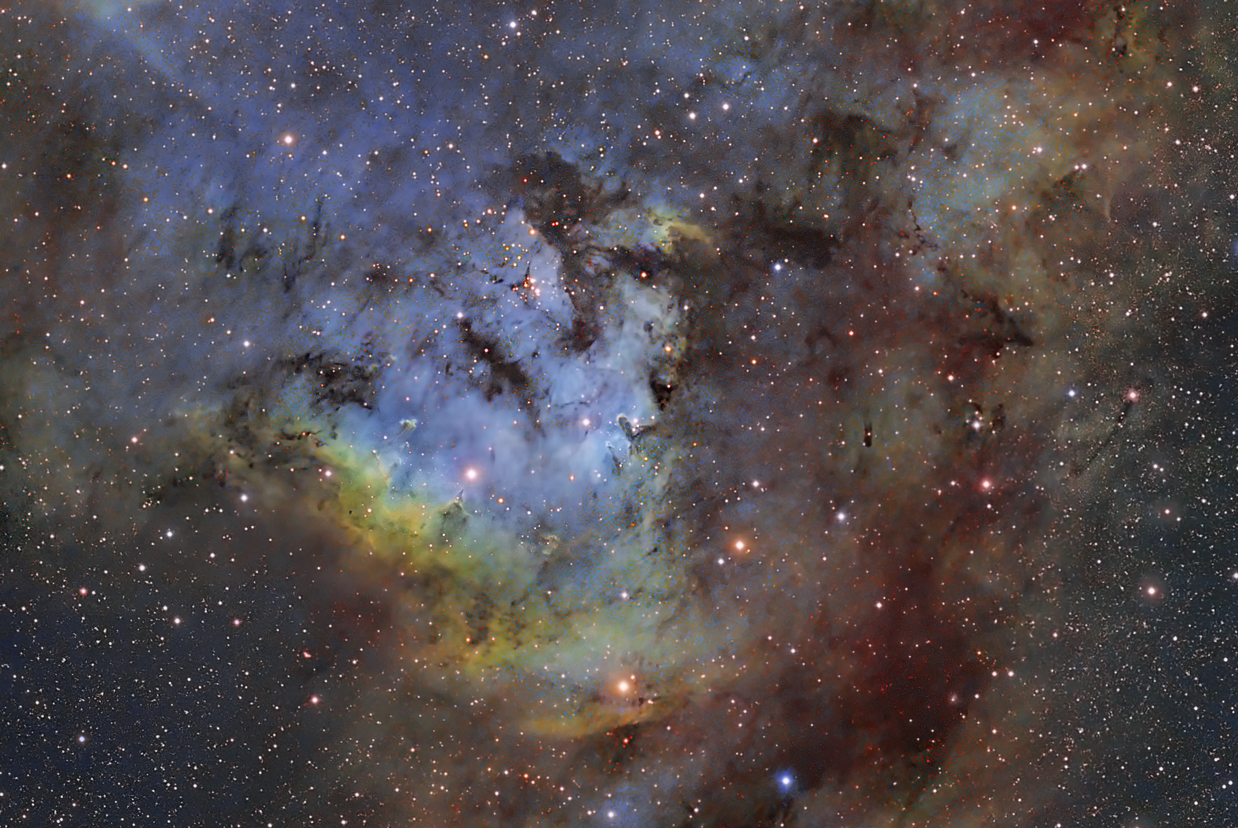Cederblad 214 and NGC 7822 Hubble Palette
Position:
RA: 00h 02m 38s (J2000)
Dec: +67degrees 41' 58" (J2000)
PA: +64 degrees (Pinpoint)
Description:
This
is a
narrowband image in which SII is mapped to RED, HII is mapped to GREEN,
and OIII is mapped to BLUE (i.e., the Hubble Palette).
Cederblad
214 (Ced214) is a large
emission nebula in the constellation Cepheus. The
brighter portion of the nebula is located
to the left of center in the image (South) and is associated
with more intense OIII emission (blue). This region is referred
to as Ced214, Sharpless 171
(SH2-171), or
sometimes NGC7822,
depending upon the source. However, there is some naming
confusion
over this, with some using the designation NGC7822 only to refer to the
fainter portion of the nebula located on the right hand side of the
image (North).
Within Ced214 there are many
regions of "elephant trunk" structures created as a result of gas being
blown away by UV radiation from one of the brightest UV sources in the
nebula, the star BD+66 1673,
located almost in the center of this field (J2000 coordinates for BD+66
1673 are RA 00 01 47; Dec +67 30 25). This star is contained
within a
cluster of about 40 hot, short-lived OB stars known
as the Berkeley 59 complex (Be59), located in
the general center of this field. As
can be appreciated by the "donut hole" in the central part
of this complex, gas in this star-forming region is being cleared out
by
the young, newly formed stars of the Berkeley 59 complex, which emit
strong UV radiation, reminiscent of
similar nebulae such as IC1396 and
the Rosette.
More information about this interesting region may be found on Rob
Gendler's webpage,
and on the APOD
website. Please check out the other links above for
alternate views of this region
Photographic
Details:
Dates: August 20, 22, 23, 24,
2016
Scope: Takahashi
FSQ106 at f5 on the Takahashi NJP
Mount
Autoguider: SBIG ST-402 with
60mm guidescope, focal length 227mm
Camera: Apogee U16M at -20C, with
7 position 50mm square filter wheel (Apogee FW50-7S)
Filters: Baader
Ha, OIII, and SII narrowband
filters; Baader RGB filters (for providing more realistic star color)
Exposures: Total
exposure 26 hours
Post-processing:
Calibrated, aligned and
stacked in Maxim, followed
by DDP
in ImagesPlus (IP). Further
processing in Photoshop CS (16
bit format) using the clipped layer mask method originally described by
Travis
Rector. Star colors obtained from RGB data
Please
note: Graphics on this website
may not be reproduced without author permission.
Back to Nebulae
Home



